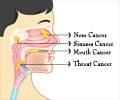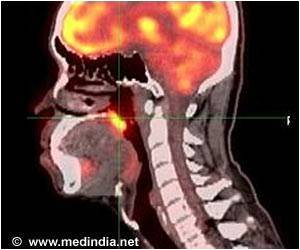Learn about the relationship between the oral microbiome and oral cancer, their potential as biomarkers in the early detection of oral cancers.

- Head and neck squamous cell cancer has a 5 year survival rate of 68%
- In addition to other factors oral microbiomes may cause head and neck cancers
- It was found that 13 bacterial species increase the risk of occurrence of head and neck cancers
Epidemiology, Risk Factors, and Prevention of Head and Neck Squamous Cell Carcinoma
Go to source).
#Periodontal_diseases not only affect #oral_health but can cause #head_and_neck_cancers. #microbiome #medindia’
Reviewing the epidemiology of head and neck cancer: definitions, trends and risk factors
Go to source).
The human oral cavity is the host for a diverse microbial community. Previous studies have found the presence of some oral microbiome in tumor tissue or oral samples of HNSCC patients.
However, there are no studies to confirm that the oral microbiome can be a causative agent for oral cancer. Oral microbiomes were the same in healthy and cancer patients.
Apart from the well-known risk factors like drinking, smoking, and human papillomavirus (HPV) recent research has focused on the potential contribution of additional microbiota to the development of HNSCC.
Microbial Risk Factors in Head and Neck Cancer
The role of bacteria and fungi in HNSCC was studied and the results were surprising. That includes factors related to the microbial metabolism of HNSCC carcinogens, which may be related to poor oral hygiene and periodontal disease, or microbial factors.Periodontal pathogens like red complex, orange complex and combined red-orange complex were moderately associated with higher risk of HNSCC. Red and orange pathogen complexes are causative agent for periodontal diseases. Periodontal disease and other factors associated with poor oral health are assumptive risk factors in head and neck cancers (3✔ ✔Trusted Source
Oral Microbiome and Subsequent Risk of Head and Neck Squamous Cell Cancer
Go to source).
Since there was no evidence that fungi were related to HNSCC, hence the interrelationship between bacteria and fungi was not explored.
Microbial risk score showed that the 13 bacterial species along with combined red and orange periodontal complexes increased the frequency of HNSCC occurrence.
Role of Oral Microbiota in Oral Cancer
Oral microbiome is a unique ecosystem that develops in a symbiotic relationship with human host. Oral microbiome imbalance such as decreased commensal bacteria and increased oral pathogen can be related to increased risk of HNSCC development.Well characterized red and orange pathogen complexes may play a role in early head and neck carcinogenesis.
The identified bacteria and bacterial complexes associated with HNSCC along with other risk factors, can be used as potential biomarkers, to identify high-risk HNSCC individuals.
Maintaining proper oral hygiene and understanding the complex relationship between oral health and cancer may help to take steps in preventing head and neck cancer. The identified oral microorganisms can be used as a biomarker for early detection of HNSCC and can help to develop preventive strategies to improve survival rates.
References:
- Epidemiology, Risk Factors, and Prevention of Head and Neck Squamous Cell Carcinoma - (https://www.ncbi.nlm.nih.gov/pmc/articles/PMC10304137/)
- Reviewing the epidemiology of head and neck cancer: definitions, trends and risk factors - (https://www.ncbi.nlm.nih.gov/pmc/articles/PMC9652141/)
- Oral Microbiome and Subsequent Risk of Head and Neck Squamous Cell Cancer - (https://jamanetwork.com/journals/jamaoncology/article-abstract/2824198)
Source-Medindia









